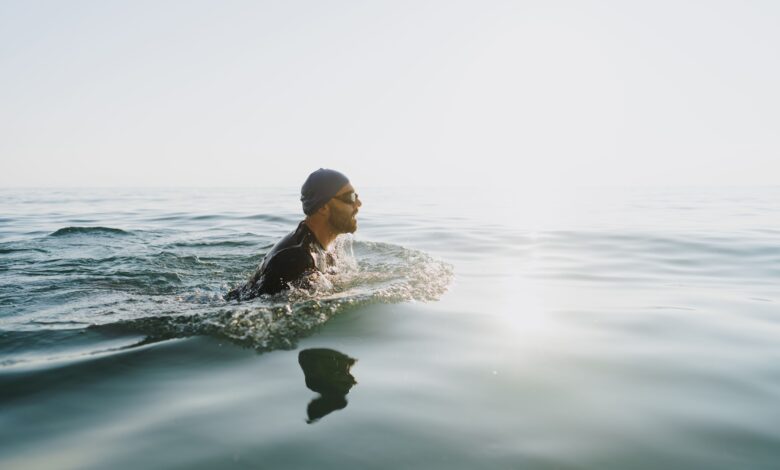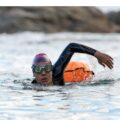Cold Water Swimming: Acclimatisation Techniques for Triathletes

Diving into the world of triathlons requires more than just physical endurance and mental strength – it also demands the ability to adapt to various environments, including cold water. For triathletes looking to conquer the challenges of cold water swimming, acclimatisation becomes a crucial component of their training regimen. In this blog post, we will explore the importance of cold water acclimatisation for triathletes, the potential risks and benefits, and effective techniques to help you thrive in the chilly depths. Join us as we delve into the waters and discover how to make cold water swimming a powerful asset in your triathlon journey.
Introduction: Understanding the Importance of Cold Water Acclimatisation for Triathletes
Cold water acclimatisation is a critical aspect for triathletes preparing to face the challenges of swimming in low temperatures. In this section, we will explore the significance of acclimatisation and how it can enhance a triathlete’s overall performance. By understanding the impact of cold water on the body and the potential risks involved, athletes can better appreciate the need for acclimatisation before diving into their training. We will also discuss the benefits of acclimatisation, including improved endurance, thermal regulation, and mental resilience. So, let’s dive in and explore why acclimatisation is a vital component for triathletes venturing into cold water swimming.
Why is Cold Water Acclimatisation Necessary for Triathletes
Cold water acclimatisation is not just a luxury, but a necessary step for triathletes who plan to venture into colder waters. In this section, we will delve into the reasons why acclimatisation is crucial for triathletes and how it can directly impact their performance.
The Impact of Cold Water on Performance
Swimming in cold water can have a significant effect on a triathlete’s performance. The drop in water temperature can lead to decreased muscle function, reduced range of motion, and impaired coordination. These factors can negatively impact swimming technique and overall speed, potentially affecting race times and performance outcomes. Understanding the impact of cold water on performance is essential for triathletes to grasp the importance of acclimatisation.
Potential Risks of Cold Water Swimming
Cold water swimming poses certain risks that triathletes need to be aware of. Hypothermia, a condition where the body loses heat faster than it can produce, is a significant risk in cold water environments. Additionally, cold water can cause vasoconstriction, leading to reduced blood circulation and increased strain on the cardiovascular system. Being aware of these risks highlights the need for proper acclimatisation to ensure the safety and well-being of triathletes.
Benefits of Acclimatisation
Acclimatisation to cold water offers numerous benefits to triathletes. By gradually exposing the body to lower temperatures, athletes can adapt and improve their tolerance to the cold. This adaptation leads to enhanced thermal regulation, allowing triathletes to maintain core body temperature and avoid the negative consequences of cold water exposure. Acclimatisation also aids in developing mental resilience, as athletes learn to cope with the discomfort and challenges associated with swimming in cold water. Ultimately, the benefits of acclimatisation can significantly enhance a triathlete’s performance and overall experience in cold water swimming.
Techniques for Cold Water Acclimatisation
Successfully acclimatising to cold water is a gradual process that requires specific techniques and strategies. In this section, we will explore various methods to help triathletes adapt to the challenges of swimming in cold water. By implementing these techniques, athletes can build their tolerance, improve their performance, and mitigate potential risks. Let’s dive into the techniques for cold water acclimatisation:
Gradual Exposure
One of the most effective techniques for acclimatising to cold water is gradual exposure. Start by slowly introducing yourself to colder temperatures during your swim sessions. Begin with shorter durations in cold water and gradually increase the time as your body adapts. This method allows your body to adjust to the lower temperatures without overwhelming it. Additionally, consider starting your acclimatisation process during the warmer months before transitioning to colder seasons.
Controlled Breathing Exercises
Controlled breathing exercises can help triathletes manage their response to cold water. Practice deep diaphragmatic breathing techniques before and during your cold water swims. This type of breathing helps relax the body, reduce stress, and maintain focus. By controlling your breath, you can regulate your heart rate and improve oxygen delivery to your muscles, enhancing your overall performance in cold water.
Appropriate Clothing and Equipment
Investing in appropriate clothing and equipment is crucial for cold water acclimatisation. Wearing a high-quality wetsuit designed for cold water swimming can provide insulation and protection, allowing you to stay in the water for longer periods. Additionally, consider using neoprene swim caps, booties, and gloves to further retain body heat. Proper gear not only keeps you warm but also enhances your comfort and confidence in colder water conditions.
Post-swim Recovery Techniques
After your cold water swim sessions, it is essential to prioritize post-swim recovery techniques. Take measures to warm up your body gradually, such as using warm showers or wrapping yourself in a warm towel. You can also engage in light physical activity or perform stretching exercises to increase blood flow and promote muscle recovery. Adequate post-swim recovery ensures that your body recovers effectively and prepares for the next cold water training session.
By implementing these techniques, triathletes can acclimatise to cold water more effectively, reduce the risks associated with swimming in lower temperatures, and enhance their overall performance in cold water conditions.
Training Schedules for Cold Water Acclimatisation
Establishing a well-structured training schedule is essential for successful cold water acclimatisation. In this section, we will explore how to develop an effective training schedule to gradually adapt your body to swimming in colder temperatures. By following a systematic approach, you can safely and efficiently acclimatise to cold water. Let’s dive into the training schedules for cold water acclimatisation:
Determining Your Training Frequency
When it comes to cold water acclimatisation, consistency is key. Determine how many times per week you can dedicate to cold water training sessions. Start with two to three sessions per week and gradually increase the frequency as you progress. Remember, the goal is to expose your body to cold water regularly to build tolerance and adaptation.
Best Time of Day for Cold Water Training
Choosing the right time of day for your cold water training sessions can significantly impact your acclimatisation process. Opt for morning or late afternoon sessions when the water temperature tends to be slightly warmer. Avoid late evenings or early mornings when temperatures are at their coldest. By selecting the optimal time, you can make your acclimatisation journey more comfortable and effective.
Monitoring Progress and Adjusting Your Schedule
Regularly monitor your progress throughout your cold water acclimatisation journey. Keep track of the duration and intensity of your swims, as well as your perceived comfort levels in the cold water. Gradually increase the duration of your swims and lower the water temperature as you adapt. Adjust your training schedule accordingly to challenge your body while ensuring you do not push beyond your limits.
By developing a structured training schedule for cold water acclimatisation, you can systematically expose your body to lower temperatures and progressively build your tolerance. Remember to listen to your body, monitor your progress, and make adjustments as necessary to ensure a safe and effective acclimatisation process.
Implementing Cold Water Acclimatisation into Your Triathlon Training
Implementing cold water acclimatisation effectively into your triathlon training requires careful planning and integration. In this final section, we will explore how to seamlessly incorporate cold water swims into your regular training routine, balance acclimatisation with other training elements, and prepare yourself mentally for the challenges ahead. Let’s dive in and discover how to make cold water acclimatisation an integral part of your triathlon journey:
Incorporating Cold Water Swims into Your Regular Training
To effectively acclimatise to cold water, integrate specific cold water swims into your regular training routine. Dedicate a portion of your swim sessions to cold water immersion, gradually increasing the duration as your tolerance improves. This will allow you to adapt to the unique demands of swimming in colder temperatures while still maintaining your overall training program.
Balancing Acclimatisation with Other Training Elements
While cold water acclimatisation is essential, it should be balanced with other training elements to ensure a well-rounded approach. Continue focusing on your swim technique, endurance, and speed in warmer water conditions to maintain overall performance. Schedule your cold water swims strategically, allowing for recovery and adaptation without compromising your progress in other areas.
Mental Preparation and Mindset
Cold water swimming can be mentally challenging, and developing the right mindset is crucial. Prepare yourself mentally by visualising successful cold water swims, building confidence, and focusing on the positive aspects of acclimatisation. Embrace the discomfort as an opportunity for growth and improvement. Adopting a resilient mindset will help you overcome the mental hurdles associated with swimming in cold water.
By incorporating cold water acclimatisation into your triathlon training, you can enhance your performance, build resilience, and tackle the challenges of swimming in lower temperatures with confidence. Remember to strike a balance between cold water acclimatisation and other training elements, and cultivate a positive mindset to make the most of your triathlon journey. Now, get ready to dive into the cold waters and conquer new horizons in your triathlon pursuits.







